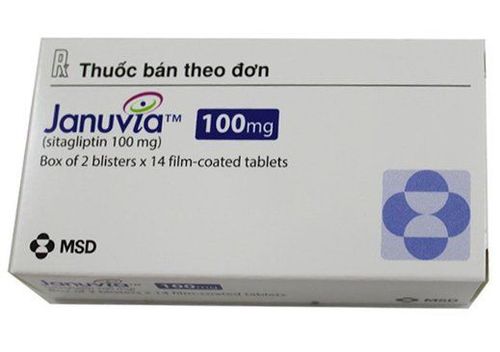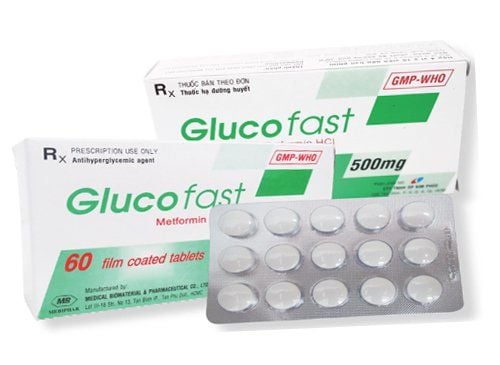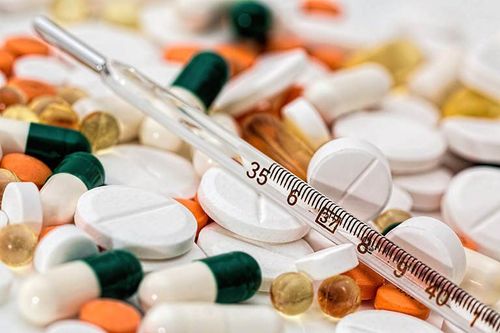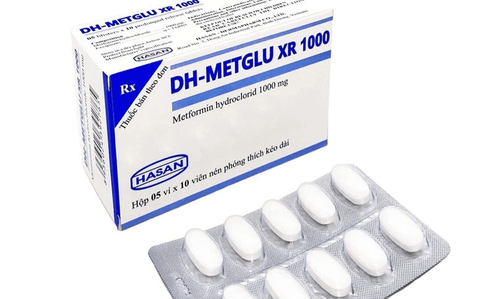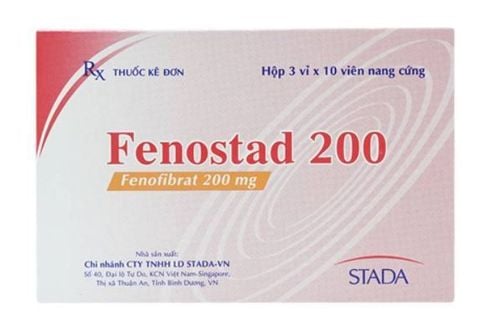This is an automatically translated article.
Getsitalip medicine is made in the form of tablets, with the main ingredient being Sitagliptin. The drug is used in support of diet and exercise in people with type 2 diabetes. Refer to the article below for more useful information about this drug.
1. What is Getsitalip?
Each Getsitalip 100mg tablet contains Sitagliptin 100mg. Sitagliptin is an active substance that inhibits DPP-4 in patients with type 2 diabetes, participating in the regulation of glucose homeostasis in the body. Sitagliptin increases insulin secretion, which reduces circulating glucose-dependent concentrations of glucagon. From there, the drug helps control blood sugar more effectively.
Indications for use of Getsitalip tablets 100mg : Adjunctive treatment in diet and exercise in patients with type 2 diabetes, helping to control blood sugar in the following forms:
Monotherapy; Combination of 2 drugs: Combination with Metcarrin, sulfonylurea or PPARY agonist (Thiazolidinediones) when monotherapy, diet and exercise cannot control blood sugar appropriately; Combination of 3 drugs: Combination with Metformin and 1 sulfonylurea or combination with Metformin and 1 PPARY (Thiazolidinediones) when the combination of the 2 drugs mentioned above, diet and exercise do not control blood sugar appropriately; Combination with insulin. Contraindications to the use of Getsitalip tablets 100mg:
Patients with a history of hypersensitivity to Sitagliptin or other components of the drug; Patients with type 1 diabetes; Patients who are being treated for diabetic ketoacidosis; Children under 18.
2. How to use and dose Getsitalip
Getsitalip is used orally. Take Getsitalip at any time, with or without food.
Dosage:
Usual dose: 100 mg daily as monotherapy or in combination with Metformin, 1 sulfonylurea, insulin (with/without Metformin), 1 PPARY agonist, metformin plus 1 sulfonylurea, or metformin plus drug PPARY synergist. When Getsitalip is combined with a sulfonylurea or with insulin, a lower dose of a sulfonylurea or insulin may be considered to reduce the risk of hypoglycemia; Patients with renal impairment: Mild renal impairment (creatinine clearance 50ml/min): No dose adjustment is required; Moderate renal impairment (creatinine clearance 30 - 50ml/min): Use dose 50mg/time/day; Severe renal failure (creatinine clearance less than 30ml/min) or end-stage renal disease requiring hemodialysis or peritoneal dialysis: 25mg once daily. Getsitalip can be taken while not on hemodialysis. Elderly: No dose adjustment is required. When using Getsitalip drug overdose, patients can use the usual supportive treatment methods including: Elimination of unabsorbed substances from the gastrointestinal tract, clinical monitoring (including electrocardiogram) and treatment. Treatment depends on the clinical condition of the patient. Sitagliptin can be eliminated by dialysis to a moderate extent. If clinically relevant, hemodialysis should be considered.
If a dose of Getsitalip is forgotten, the patient should take it as soon as possible. If it is almost time for the next dose, the patient should skip the missed dose and take the next dose as scheduled.
3. Side effects of the drug Getsitalip
When using Getsitalip, patients may experience some side effects such as:
Monotherapy: Headache, nasopharyngitis, upper respiratory tract infection; Sitagliptin in combination with Metformin HCl: Nausea, drowsiness, upper abdominal pain, diarrhea, hypoglycemia; Sitagliptin with Pioglitazone: Hypoglycemia, peripheral edema, flatulence; Sitagliptin with sulfonylurea, Metformin HCl: Hypoglycemia, constipation; Sitagliptin with Rosiglitazone and Metformin HCl: Hypoglycemia, diarrhea, vomiting, headache, peripheral edema; Sitagliptin with insulin: Causes colds, headache, hypoglycemia, dry mouth, constipation, rectal obstruction, urinary retention, stool mass. Patients should inform their doctor about the side effects encountered when using Getsitalip drug so that appropriate intervention measures can be taken.
4. Be careful when using Getsitalip
Before and during the use of Getsitalip, the patient should note:
After starting Sitagliptin, the patient should be carefully monitored for symptoms of pancreatitis. If pancreatitis is suspected, the patient should discontinue the drug and institute appropriate treatment; The incidence of hypoglycaemia is increased in people taking sitagliptin with a sulfonylurea or with insulin (drugs that can cause hypoglycaemia). Therefore, it may be necessary to reduce the dose of sulfonylurea or insulin to reduce the risk of hypoglycemia; Care should be taken when using Getsitalip when driving or operating machinery because there have been cases of dizziness and drowsiness. Especially, when this drug is combined with sulfonylurea drugs or insulin, it can also cause hypoglycemia, dangerous for drivers, operating machines; The safety of Getsitalip in pregnant women has not been studied, so it is best not to use it for pregnant women; It is not known whether Sitagliptin passes into breast milk, so it is best not to use this medicine in nursing mothers.
5. Getsitalip drug interactions
Sitagliptin has a very small effect on plasma digoxin concentrations, so no dose adjustment is recommended. However, patients at risk of insulin toxicity should be monitored when taking sitagliptin and digoxin concurrently.
To ensure safety, patients should inform their doctor about the drugs they are taking, medical history to be considered for some possible interactions. At the same time, patients need to strictly follow the instructions and instructions of the doctor when taking Getsitalip.
Please dial HOTLINE for more information or register for an appointment HERE. Download MyVinmec app to make appointments faster and to manage your bookings easily.





